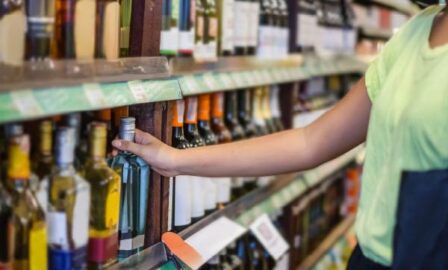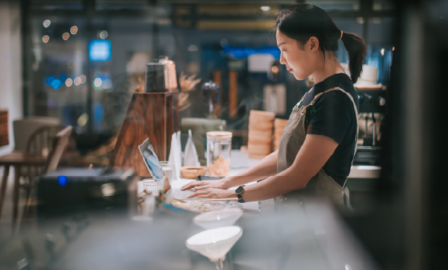A 6-Pack of Takeaways from BevNET Live Winter 2024
Clarkston Consulting’s industry expert James Savage recently attended BevNET Live Winter 2024 in Marina del Rey, California from December 8-10. At this event, attendees – from start-ups to growing brands to industry partners – explored the state of the beverage industry and where it’s going. Below, James has provided a 6-pack of key takeaways from BevNET Live Winter 2024.
Takeaways from BevNET Live Winter 2024
Cash is King: In tough economic times, have a smart & deliberate cash flow strategy
Cash is the lifeblood of any business, but for emerging brands, it’s harder to come by with inflation, high interest rates, etc. While the cash crunch is starting to get better and investors are becoming more active, we will likely never see the capital availability return to the 2018-2022 levels. For companies looking to attract investors, it’s important to know what they are looking for, and what we heard at BevNET was that investors are looking for is 1) profitability and 2) velocity.
The advice we heard for younger brands – protect your margin. You don’t have endless cash to throw at marketing, so it’s key to have a strategy to manage your promotion, take some calculated risk, increase your cash runway, and build long-term profitable growth. The first step is to understand which marketing and promotional channels are driving your sales. We also heard from established beverage brands and retailers that it’s ok to say no when a retailer asks you to move into new geographies, open more stores, etc. – especially if it doesn’t align with your short- to medium-term strategy. Instead, find the right partners (investors, co-packers, retailers, distributors) that understand your time horizon and who will work with you for the long-term success of your brand. Most importantly, don’t be afraid to go to the negotiating table to get better terms with your vendors and partners.
Beyond the logo and packaging, building a brand is key
To paraphrase, Madeline Haydon, Founder of Nutpods, “Your brand is how your consumers perceive it, not what you say it is.” Your brand is what drives people to pick your product and what keeps them interested and engaged. As Hunter Thurman, CEO of consumer research firm Alpha-Diver, explained, the 4 reasons consumers pick something are function, experience, conformity, and impulse. Having a “good liquid” is table stakes in the beverage industry, and alone it isn’t enough to get consumers to try your product.
Overall, consumer trust in brand claims is low, so companies need to lean into transparency, authenticity, and building a sense of belonging. Why? Because consumers want action over ideals. For example, happy has made the National Alliance on Mental Illness (NAMI) an equity partner in their business, in addition to printing their information on every one of the products, demonstrating that “happy” isn’t just the name on the container, but rather something they truly believe in, invest in, and bring to their consumers.
Using culture, history, and exotic ingredients to address consumer needs
Consumer desires in the beverage space have been rapidly changing over the last decade. To try and differentiate, beverage brands are looking for new ways to stand out, whether it’s looking to the past, embracing culture and sub-cultures, or exploring eye-catching new ingredients.
New and innovative ingredients and methods are a good way to differentiate and can often provide functional benefits many consumers are looking for. However, they need to be balanced with the potential increased barrier to entry to get “cans in hands” if the ingredients are unknown or have a preconceived notation. A big consumer need of emphasis we saw was around hydration. Many new hydration beverages include ingredients like magnesium, hydrogen gas, maple water, deep ocean minerals, and moringa. Another need was stress management, featuring beverages with ingredients like kava, magnesium, ashwagandha, reishi mushrooms, and L-theanine. The “Better for You” movement, which doubles down on organic, natural, & simple ingredients, and pre- and pro-biotics, is also making waves.
Brands are also embracing history and culture. Yoju, winner of the New Cocktail Showdown, has brought a classic Korean cocktail to the masses, using traditional Korean yogurt soju and flavors in a ready-to-drink canned cocktail. On a similar note, Lixir, a semi-finalist, provides a modern and accessible version of mead, a drink that dates back 20,000 years ago.
Sustainability is also a hot area of discussion, with a growing preference now for regenerative farming and carbon negative practices. Recoup, winner of the New Beverage Showdown, is the first certified regenerative organic beverage company, for example.
As we look ahead, we are noticing trends in start-ups that provide a good direction of where the industry is going as a whole. For larger brands interested in getting more involved in the space, a good first step is investing in the R&D of these innovative ingredients and methods.
The “Better for You” movement & staying power of functional beverages
Functional beverages are here to stay, and everyone wants a “beverage with benefits.” So, you need to give the consumer a reason to pick up your beverage. As previously mentioned, the “Better for You” movement is disrupting industry and poses a real threat to traditional beverages. Creating a functional benefit is one way to differentiate yourself from competitors. Lifestyle drinks are also the new norm, whether it’s for energy, relaxation, gut-health, or hydration. Poppi and olipop, for example, are leaders in this space, both winning BevNET Brand of the Year.
The fastest growing brands in the industry are functional brands, and brands that don’t follow suit will fall behind. As such, beverage brands will need to get creative to find a way to compete and stay relevant.
Sobering facts about the non-alcoholic beverage market
Everyone has seen the trends in alcohol consumption; spirit sales are down from 2023, and non-alcoholic beverage sales are up. This is driven by changing demographics, such as Gen Z coming of drinking age, and the desire for healthier options.
Non-alcoholic beverages are not just for sober and sober-curious consumers, and emerging non-alcoholic brands are moving beyond the recreation of traditional alcoholic beverages. Instead, we are seeing the emergence of “tempo drinkers” – people who alternate between full, low, and non-alcoholic beverages in one event.
Heidi Dillon, CEO of Distill Ventures, cited a study in her pesentation that highlighted how non-alcoholic beverages are becoming incremental spend and not completely cannibalizing alcoholic beverage spend. The study showed that consumers of both alcoholic and non-alcoholic beverages spent, on average, $200 a year more than consumers who solely purchased alcoholic beverages.
For the first time, non-alcoholic beer outsold alcoholic beer at Whole Foods in the summer of 2024. – Heidi Dillon, CEO of Distill Ventures
Non-alcoholic beverages are not just a fad and are making their way to a broader cohort of consumers. That said, large alcohol companies need to find a way to get in on the action or find alternatives ways to compete.
From coolers to phone apps, beverage retail is changing
The conference highlighted several retailers and what they are looking for out of beverage brands and what they are doing to innovate their coolers.
Spec’s, a liquor store in Texas, talked about their big bet on rolling out hemp-based Delta-9 THC beverages and the huge success that it was. On a similar note, Pilot spoke about how beverage brands need to really understand the Pilot customers and how their brand would speak to them. They also spoke about the importance of having a regional strategy, given that Pilot stores are typically 50 – 100 miles apart. Both Pilot and Spec’s spoke about how important it is for brands to be boots on the ground. So, get your people in the stores, giving out samples and selling your brand and story!
TikTok Shop also spoke about how their new platform offers an amazing opportunity for brands to truly integrate their sales and marketing efforts. With TikTok as the core platform and the algorithm serving as a hyper targeted SEO tool, brands can take advantage of viral moments and trends and reduce the barrier for purchasing a product by letting consumers discover and purchase all within one app.
Whether you’re a big or small company, understanding what your retail partners (brick-and-mortar or digital) are looking for can ensure a successful partnership.
Looking into 2025
The beverage industry is on the frontlines of innovation in the CPG industry, and the barrier to entry for a new beverage company is relatively low and has a large and established partner network. This means that we get to see a lot of new and innovative ideas come out, and while not all of them are going to make it, what we’re seeing come out of emerging beverage brands is something we are seeing or can expect to see across other sub-verticals i.e. knowing what you’re putting into your body, focusing on healthier lifestyles, or knowing where products are coming from with a focus on sustainable and regenerative practices.
To learn more about our takeaways from BevNET Live Winter 2024, contact our industry experts here.
Subscribe to Clarkston's Insights



